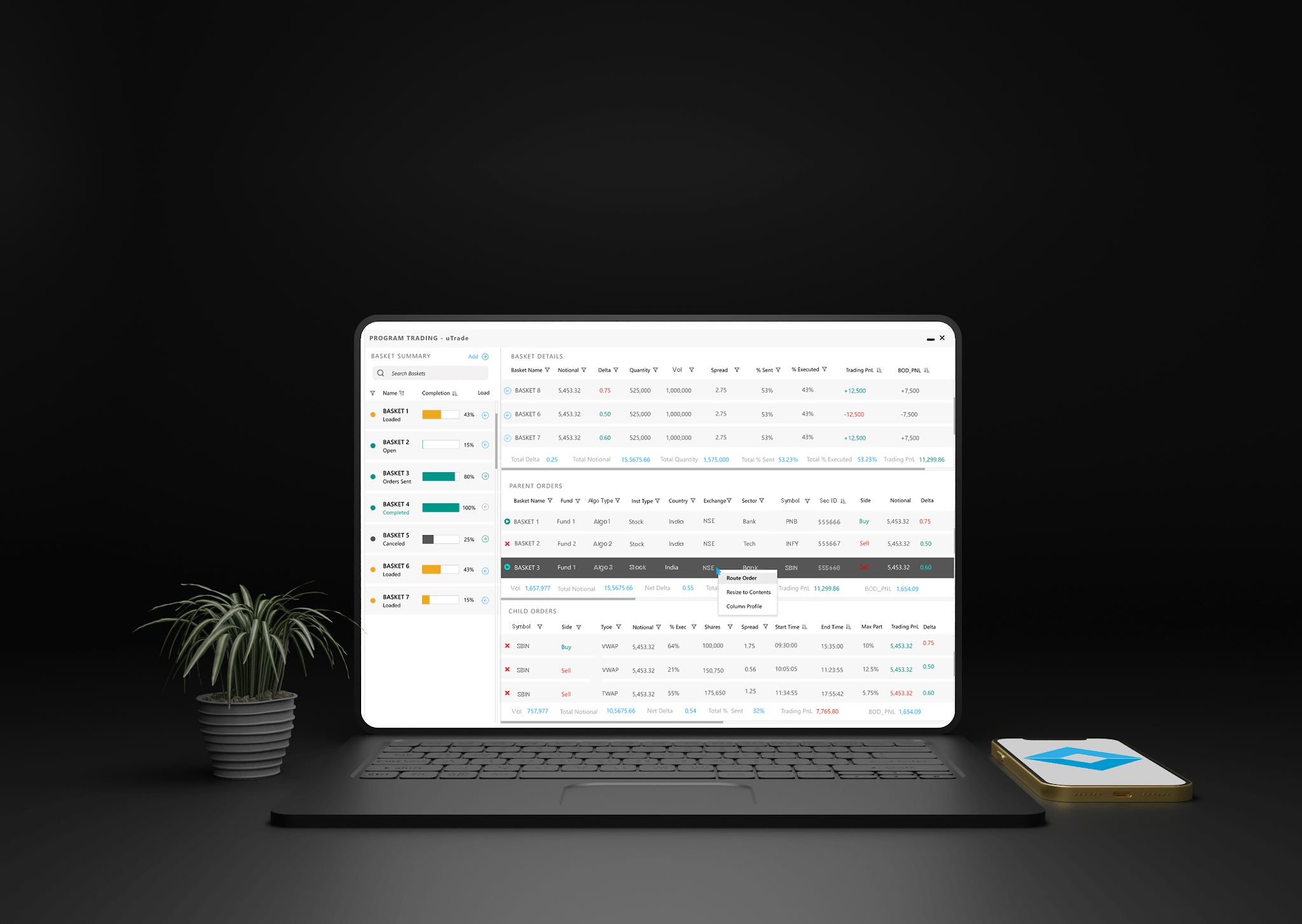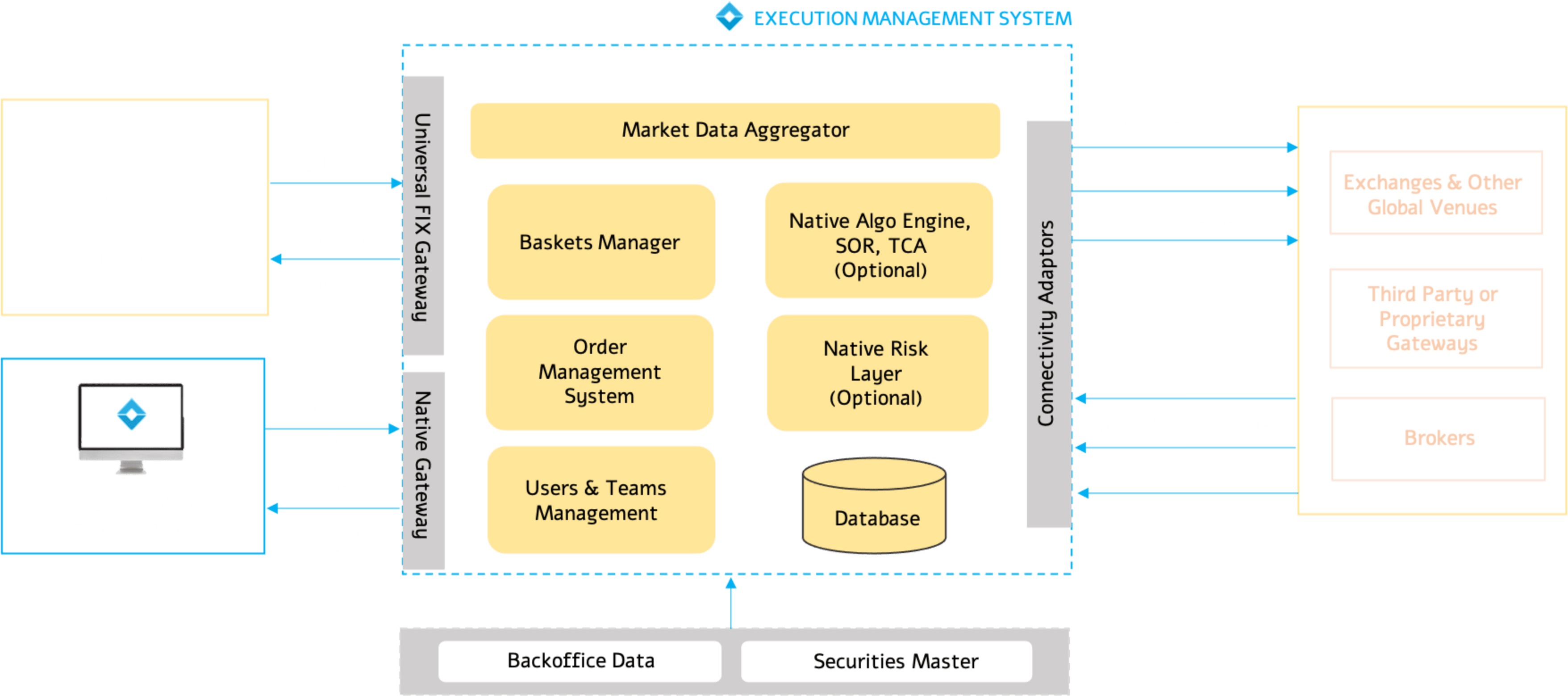uTrade Buy Side EMS for Broker Neutral, Multi Asset Execution
Built For Asset Managers and the Complex Range of Trading
Functions They Execute Everyday

uTrade EMS is a multi-asset, multi-market solution for managing
increasingly complex trading functions performed by asset managers.
It integrates easily with your OMS, proprietary gateways and
databases - allowing you to seamlessly import orders, route them to
desired execution destinations, and also export fills back to
proprietary or third party OMS applications if needed. The EMS
enables you to analyze aggregated market data, sourced from dozens
of global exchanges in real-time.
Trade Bigger, Better and Wider.
Precise Execution
We understand that each basis point is precious, and pack
in-built suite of execution algos, risk management and TCA so
your teams achieve the best execution prices for each basket.
Risk Capabilities
Use uTrade’s native risk management system to administer trading
risk, including limits and margins. Also get access to
surveillance dashboards to stay updated with your team’s
activities in real-time.
Universal FIX Gateway
Manage order flow seamlessly with different brokers,
applications, gateways and trading destinations with our popular
FIX engine that delivers wide connectivity capabilities with
minimum latency.
Algorithms & APIs
Leverage uTrade’s native algo engine, smart order routing,
transaction reporting & analysis, custom algo APIs and deep
connectivity with any of your preferred black box trading
engines.
FROM THE BLOG
Asset Managers: Ready to Upgrade your EMS?
EMS (Execution Management System) is a specialized application suite
built for buy side fund managers and traders to access real-time
market data and provide fast, seamless to trading destinations
including brokers, stock exchanges and proprietary gateways. With
trading desks continuing the trend of consolidation, they are
striving to find a trading solution that’s both fit-for-purpose for
today’s challenges, but flexible and nimble enough to meet future
needs as the markets we trade and how we trade them continue to
evolve as a response to increasing innovative technology
requirements, evolving regulations, and ability to tap into market
opportunities.
Read More














